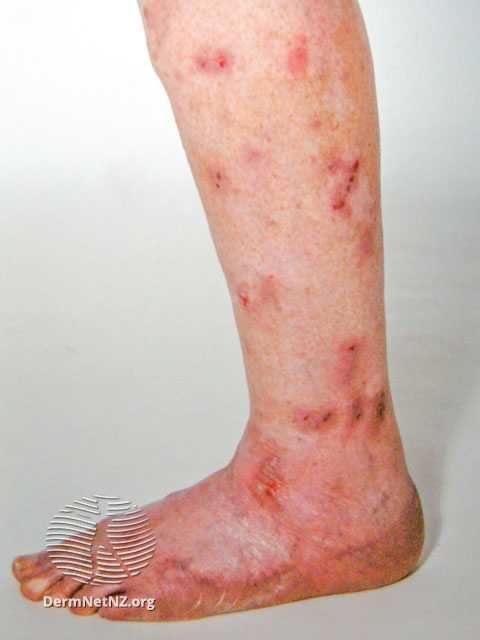
Prurigo Nodularis (Nodular Prurigo)
Prurigo nodularis, or “Picker’s Nodules”, are itchy nodules that are constantly getting rubbed and scratched.
Credit: DermNet NZ
What is prurigo nodularis?
Prurigo nodularis is a chronic skin condition characterized by intensely itchy nodules, primarily located on the arms and legs. These nodules can become inflamed due to persistent scratching. While the exact cause of the condition remains unclear, effective treatments can manage symptoms.
What causes prurigo nodularis?
The precise cause of prurigo nodularis remains undetermined. However, the relationship between itching and the formation of nodules is not well-defined. It's uncertain whether scratching leads to nodule development or vice versa. Potential factors that might be associated with the onset of prurigo nodularis include:
Neural irritation preceding the scratching.
Possible association with nerve root compression near the spine.
Underlying conditions such as eczema, asthma, or seasonal allergies.
Certain systemic diseases, including kidney or liver disease, thyroid disorders, HIV, iron deficiency anemia, and polycythemia vera.
What are the symptoms of prurigo nodularis?
Symptoms of prurigo nodularis encompass:
Symmetrical, intensely itchy nodules, typically larger than 0.5 cm.
Predominantly appearing on the arms and legs but can manifest on any part of the body.
Potential association with hair follicles, as nodules often emerge around them.
How do I treat prurigo nodularis?
Managing prurigo nodularis can be challenging, but numerous treatment options can offer symptom relief:
Preventive Measures: Utilize occlusion techniques to prevent scratching and picking at the nodules.
Topical Treatments: Includes topical steroids, moisturizers, cooling creams, and vitamin D creams.
Medications: Oral antihistamines (e.g., loratadine or diphenhydramine), tricyclic antidepressants (e.g., amitriptyline), and neuropathic pain relievers like gabapentin or pregabalin. Dupixent has also been approved for moderate-to-severe prurigo nodularis.
Direct Interventions: Steroid injections, cryotherapy, and phototherapy.
It can be very difficult for prurigo nodules to heal. Generally the longer they have been there the longer they may take to heal.
Credit: DermNet NZ
Prurigo nodules may resemble other types of skin growths, like warts or keratoses.
Credit: DermNet NZ



